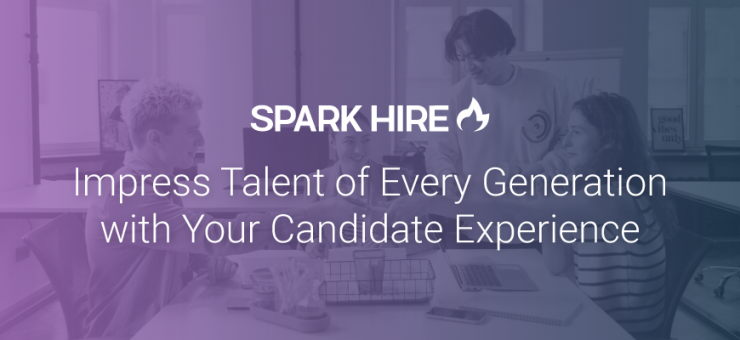Countless words of wisdom have been shared between HR experts about the candidate experience and generational differences in the workforce. You’ve studied up on what strategies companies use to tap into each group’s talent pool.
For example, if you want to attract millennial talent, you need to offer flexible work options. Members of Generation Z want to see that their jobs will make a difference. Gen Xers need to know there are clear career paths that will keep them advancing within a company for years.
Not to throw a wrench into your strategy, but recent research regarding generational hiring has revealed the differences really aren’t that dramatic. And there is inarguably one thing candidates of every generation desire: a seamless candidate experience.
Most HR leaders are shifting their focus to understanding the “perennial” workforce.” These candidates have been described by expert Gina Pell, as “a group of people of all ages, stripes, and types who go beyond stereotypes and make connections with each other and the world around them.”
No matter how old you are or how much work experience you have, applying for a new job is stressful. Companies that consistently create a positive candidate experience drastically increase their odds of getting the best talent on board with their organizations.
For this reason, we’ve compiled three best practices to ensure your hiring process is impressing candidates of every generation:
1. Streamline the scheduling process
Scheduling a job interview should be easy. But often, when you email a candidate a few options to meet up, they respond that none of the times work, and the back and forth continues until they can come to a compromise. This sends candidates a subtle, yet unfortunate, message: your time is more valuable than theirs, and they need to rearrange their lives to fit into your schedule.
No matter what stage of life your job seeker is in, they have personal obligations and responsibilities. Your scheduling process should show you respect this fact and value their time.
Plus, showing that your company embraces flexibility will speak to all candidates. In fact, a 2021 survey from CommercialCafe found that at least a third of every generation values flexible scheduling over higher pay.
By using interview software with an automated scheduling function, all you need to do is send candidates a link to your calendar. This way, they’re empowered to pick a time to connect that works best with their availability.
Go the extra step in improving the candidate experience by making sure your availability takes into account a wide variety of scenarios. For example, a candidate with a current job might not be able to talk with you during the traditional workday. Having one or two days a week when you allow talent to schedule earlier or later interviews will ensure that everyone can apply.
2. Focus on your branded messaging
It can be tricky to get branding right during the hiring process. You want the messaging you use to attract talent that will be a great cultural fit. But you also don’t want to use too much lingo that might leave some candidates feeling disconnected from the brand.
When you’re writing content for your hiring process — and this includes everything from emails to job descriptions to your career page — focus on your company’s core values. Any candidate you consider should clearly understand what the organization is about and connect with that message.
For example, if transparency is a big part of your company, embrace that in your employer branding. In job descriptions, don’t just list all the fantastic aspects of a position, be honest about potential downsides as well.
Naturally, these facts can be positioned in a way that candidates can interpret the ins and outs of the role based on their individual needs and preferences. But this way, applicants know the pros and cons of the job and see how much your organization values transparency.
3. Reduce time to hire
Many organizations consider time to hire only as something that impacts their bottom line. The more time and resources you invest in hiring, the more you can lose if a new hire doesn’t work out.
But candidates are also investing their time in your hiring and candidate experience. By taking measures to reduce time to hire, you show multigenerational talent that you value their time and needs.
One of the best ways to shorten your hiring process is by looking at each step and assessing its efficiency. You could find ways to use technology to speed things up or even discover that certain screening methods do little to assess candidates and should be cut out completely.
Here are three questions to ask about every step of your hiring process:
- Does it adequately identify candidates who are a poor fit? If the majority of candidates are making it past a screen, it’s probably not an ideal way to evaluate candidates and should be eliminated.
- Is there technology available to make a step more efficient? Decades ago, interviewing a candidate meant spending time scheduling and conducting in-person interviews. But now, with video interviews, it’s quicker and easier for candidates to complete interviews and for hiring pros to assess candidates. With a little bit of research, you can consistently find other new technologies that equally improve various parts of the hiring experience.
- Does it make it easier to make a final decision? Sometimes one top candidate excels during one step of the hiring process, but a second one does better in another. If your hiring process is so long and complicated that you’re unable to confidently make a final decision, it’s time to cut out redundant screenings or replace them with more relevant ones.












